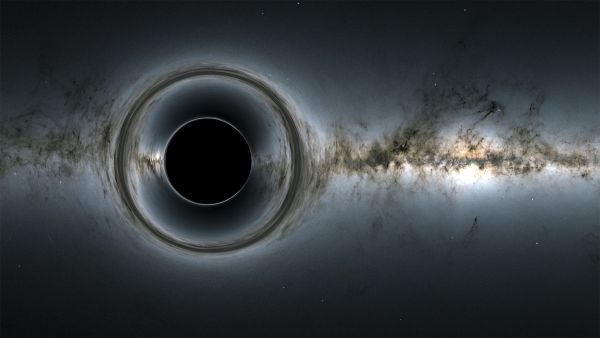Rogue black hole spotted on its own for the first time
The isolated stellar-mass black hole is the first of its kind ever detected, scientists say.

Astronomers may have for the first time detected and measured the mass of an isolated stellar-mass black hole, a new study finds.
Previous research suggested that when giant stars more than 20 times the mass reach the end of their lives, they usually die in catastrophic explosions known as supernovas, and their dense cores are expected to collapse to become black holes.
Stars big enough to create black holes are estimated to make up about one out of a thousand stars, suggesting that in the Milky Way, "there should be about 100 million stellar-mass black holes," study lead author Kailash Sahu, an astrophysicist at the Space Telescope Science Institute in Baltimore, told Space.com. (Stellar-mass black holes are up to a few times the sun's mass, as opposed to supermassive black holes millions of billions of solar masses large.)
Related: Did a dark energy discovery just prove Einstein wrong? Not quite.
Until now, all stellar-mass black holes detected to date have existed in binary systems with partners such as neutron stars. In contrast, the majority of the Milky Way's stellar-mass black holes should be singletons, Sahu said.
However, "nobody has ever been able to find an isolated black hole," Sahu said. As their name suggests, black holes absorb any light that falls into them, making them difficult to detect against the dark of space. Black holes are easier to detect in binary systems because their interactions with their partners can generate light or gravitational waves whose properties signal a black hole's presence. In contrast, isolated black holes lack such partners to help reveal their existence.
Now, with the help of NASA's Hubble Space Telescope, scientists have discovered an isolated stellar-mass black hole about 5,150 light-years away from Earth, in the direction of the bulge in the center of the Milky Way.
Sign up for the Live Science daily newsletter now
Get the world’s most fascinating discoveries delivered straight to your inbox.
"We now know that isolated black holes exist," Sahu said. "And they have masses similar to the black holes found in binaries. And there must be lots of them out there."
The key behind this discovery is how powerful gravitational fields, such as those belonging to black holes, warp the fabric of space and time. As such, they can act like magnifying glasses, a phenomenon known as "gravitational lensing."
"If one can detect and measure the bending of light caused by these massive objects, it's possible to detect them and measure their masses," Sahu said.
A number of ground-based survey programs monitor millions of stars every night to detect gravitational lensing events "where a star slowly brightens and fades over days or months," Sahu said. "This microlensing phenomenon is caused by an intervening object, which can be a star or a white dwarf or a neutron star or a black hole or so on. The survey programs typically detect about 2,000 microlensing events per year. A small number of them are expected to be caused by black holes."
The greater the mass of a gravitational lensing object, the longer the resulting brightening. Since a black hole is expected to be massive, its microlensing event is expected to have a long duration. "Also, a black hole is expected to be dark," Sahu explained. "So we use these two as our main criteria — the event should have a long duration, and the lens should not be emitting any light."
However, small-mass stars that move slowly in the sky may also look relatively dark and generate long-duration gravitational lensing events. One way to distinguish an isolated black hole from a small-mass star is the fact that a black hole will deflect the light from background stars "enough that it can be measured with Hubble," Sahu said. "If the Hubble observations show large deflection but no light from the lens, then it would be a black hole."
By combining Hubble observations with ground telescope data, the scientists discovered a 270-day-long microlensing event, called MOA-2011-BLG-191/OGLE-2011-BLG-0462, which they said likely came from an isolated black hole.
"It took two years of planning followed by six years of observing with Hubble, but it was very satisfying to see the incredible results," Sahu said. "It was immediately clear as daylight that it's a black hole, there was nothing else that could cause the deflections we measured."
The researchers estimated this isolated black hole was about 7.1 times the mass of the sun. They also found this black hole is traveling at a speed of about 100,000 mph (162,000 kph). This suggested this black hole may have received a kick from the supernova explosion that gave birth to it.
Future observatories such as Nancy Grace Roman Space Telescope and the Vera C. Rubin Observatory in Chile may "enormously help" discover more isolated stellar-mass black holes, Sahu said.
The scientists detailed their findings online Jan. 31 in a study submitted to the Astrophysical Journal.
Originally published on Space.com.













